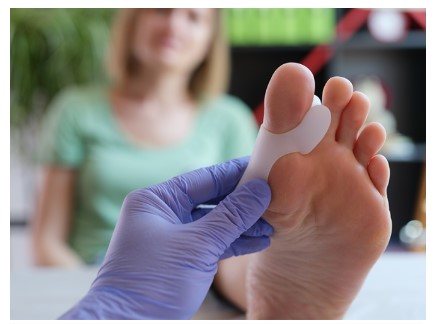Bunions, medically known as hallux valgus, are bony bumps on the joint at the base of your big toe. They develop when your big toe pushes against the adjacent toe, causing the joint to stick out and become enlarged. This condition can lead to significant pain, swelling, and difficulty walking, making it more than just a cosmetic issue. For many people, the only effective solution is bunion surgery.
If you or someone you know is considering bunion surgery, understanding the procedure and the recovery process is crucial. This article provides a comprehensive, step-by-step overview of what you can expect from bunion surgery, from the initial consultation to full recovery.
1. The Initial Consultation
The journey to bunion surgery begins with a consultation with a foot and ankle specialist. During this appointment, the surgeon will assess the severity of the bunion, discuss your symptoms, and review your medical history. X-rays are often taken to determine the extent of the deformity and to help plan the surgical approach.
This consultation is also an opportunity for you to ask questions and express any concerns. Your surgeon will explain the different bunion surgeries available and recommend the best option based on your specific condition. It’s important to be honest about your expectations and to understand that while surgery can alleviate pain and improve function, it may not result in a perfectly straight toe.
2. Preparing for Surgery
Once you and your surgeon have decided to proceed with the surgery, you will be given specific instructions on how to prepare. This may include:
- Stopping certain medications: You may be advised to stop taking blood thinners or other medications that could increase the risk of bleeding during surgery.
- Fasting: Depending on the type of anesthesia used, you may need to fast for several hours before the procedure.
- Arranging for transportation: Since you won’t be able to drive yourself home after surgery, it’s essential to arrange for someone to take you home.
Your surgeon may also recommend preoperative physical therapy to strengthen the muscles around your foot and ankle, which can aid in recovery.
3. The Bunion Surgery Procedure
Bunion surgery typically takes one to two hours, depending on the complexity of the case. There are several types of bunion surgeries, but the most common procedures include:
- Osteotomy: In this procedure, the surgeon makes small cuts in the bones of the big toe and realigns them to correct the deformity. The bones are then held in place with screws, plates, or wires.
- Exostectomy: This procedure involves removing the bony bump on the toe joint. It is usually performed in conjunction with an osteotomy to ensure long-term results.
- Arthrodesis: In severe cases, the surgeon may fuse the bones in the big toe joint to eliminate pain and correct the deformity. This procedure is typically reserved for patients with advanced arthritis or severe bunions.
In recent years, minimally invasive bunion surgery has gained popularity. This technique involves making smaller incisions, which can lead to less scarring, reduced pain, and a quicker recovery time. However, not everyone is a candidate for this type of surgery, so it’s important to discuss your options with your surgeon.
4. Post-Surgery Care and Immediate Recovery
After the surgery, you will be taken to a recovery area where your vital signs will be monitored as the anesthesia wears off. You can expect your foot to be bandaged and possibly placed in a surgical boot or cast to protect it as it heals.
Pain management is a critical aspect of the immediate recovery process. Your surgeon will prescribe pain medications to help manage discomfort. Elevating your foot and applying ice can also help reduce swelling.
It’s essential to follow your surgeon’s post-operative instructions carefully to avoid complications. This may include:
- Keeping your foot elevated: Keeping your foot elevated as much as possible for the first few days can help reduce swelling.
- Avoiding weight-bearing activities: Depending on the type of surgery performed, you may need to avoid putting weight on your foot for several weeks.
- Caring for the incision site: Keeping the incision clean and dry is crucial to prevent infection. Your surgeon will provide specific instructions on how to care for the wound.
5. The Recovery Process
The recovery process from bunion surgery varies depending on the type of surgery performed and individual factors like age, overall health, and the severity of the bunion. However, most patients can expect the following timeline:
- First few weeks: During the initial weeks, you will likely need crutches or a walker to move around without putting weight on your foot. Swelling and bruising are common during this time, and you may need to wear a surgical boot or cast.
- 4 to 6 weeks post-surgery: Around this time, you may begin to transition to weight-bearing activities, depending on your surgeon’s advice.
- 3 to 6 months post-surgery: Most patients are able to return to normal activities, including walking and light exercise, within three to six months. However, it may take up to a year for the swelling to completely subside and for you to see the final results of the surgery.
Throughout the recovery process, it’s important to attend all follow-up appointments with your surgeon. These visits allow your surgeon to monitor your progress, remove stitches or pins if necessary, and address any concerns you may have.
6. Potential Risks and Complications
As with any surgery, bunion surgery carries certain risks. While most patients experience a successful outcome, it’s important to be aware of potential complications, including:
- Infection: Infections can occur at the incision site, requiring additional treatment.
- Nerve damage: There is a risk of nerve injury during surgery, which can result in numbness or tingling in the toe.
- Stiffness and limited mobility: Some patients may experience stiffness in the toe joint, which can limit movement.
Discussing these risks with your surgeon before the procedure can help you make an informed decision and know what to expect during recovery.
Conclusion
Bunion surgery can be a highly effective solution for those suffering from the pain and discomfort of bunions. Understanding the step-by-step process, from the initial consultation to the recovery period, is crucial in making an informed decision and preparing for a successful outcome. Whether you opt for traditional or minimally invasive bunion surgery, following your surgeon’s advice and adhering to post-operative care instructions will help ensure the best possible results. If you’re considering bunion surgery in Scottsdale, AZ, consulting with a qualified specialist will set you on the right path to recovery and improved foot health.




